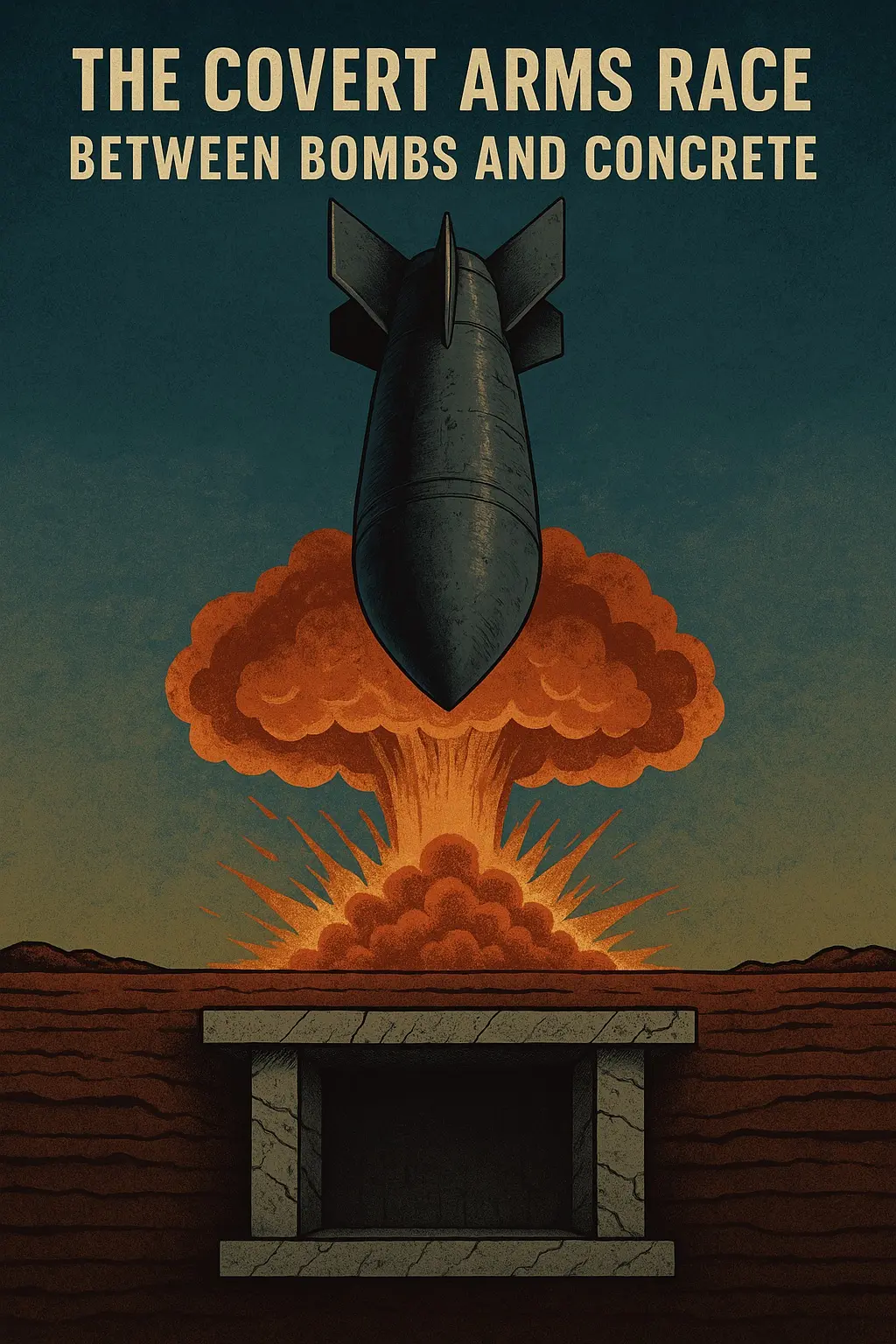By
Gigabit Systems
June 25, 2025
•
20 min read

America Drops Massive Bunker Busters on Iran — But Did They Work?
In a dramatic escalation of the ongoing conflict between Israel and Iran, the United States launched “Operation Midnight Hammer” over the weekend, marking the first-ever use of its 30,000-pound Massive Ordnance Penetrator (MOP) in combat. These bunker-busting bombs were dropped by B-2 stealth bombers on three of Iran’s most fortified nuclear sites: Fordow, Natanz, and Isfahan.
While former President Trump declared the operation a complete success, early satellite imagery and U.S. intelligence suggest otherwise — indicating the attack may have only set Iran’s nuclear program back by a few months.
The Bomb vs. the Bunker
This high-stakes confrontation highlights a less visible but critical arms race — not between nations, but between materials: steel versus concrete.
For decades, military engineers have been refining bunker-busting weapons. Modern penetrators are made from hardened alloys like Eglin Steel, designed to punch through reinforced targets with minimal explosive payloads. But Iran, as well as other military powers, has been investing in the opposite side of the equation: Ultra High Performance Concrete (UHPC), a fiber-reinforced material capable of withstanding 40,000 psi — far beyond the strength of conventional concrete.
Military insiders believe that Iran’s underground bunkers may be fortified with UHPC or even more advanced layered concrete technologies such as Functionally Graded Cementitious Composite (FGCC), which combines hard outer shells, energy-absorbing middle layers, and anti-spall inner coatings. If confirmed, this would help explain the MOP’s limited effect on the nuclear facilities.
A History of Escalation
This isn’t the first time U.S. bunker-busting technology has been challenged. During the Gulf War in 1991, Iraq’s heavily fortified command centers required a crash program to build stronger bombs — leading to the infamous 5,000-pound BLU-113. Today’s MOP is the spiritual successor, and at 30,000 pounds, it’s nearly the largest weapon the U.S. can drop without resorting to nuclear payloads.
However, experts warn that even the MOP may not be enough.
Where Does the Arms Race Go From Here?
As military concrete gets tougher, steel-based bomb casings are hitting their physical limits. The future may lie in hypersonic penetrators — non-explosive missiles made from tungsten or similar materials, relying purely on kinetic energy to crack through hardened targets at speeds exceeding Mach 5. Some call them “rods from God.”
Alternatively, soft-target strategies may dominate. Rather than penetrate a bunker directly, attackers might aim to destroy entrances, communications lines, or surrounding infrastructure — rendering the facility inoperable without needing to physically break through.
Final Thoughts
Whether Iran’s bunkers survived the weekend’s attack remains unclear. But one thing is certain: in the shadowy competition between bombmakers and bunker builders, neither side holds permanent advantage. As concrete becomes “smarter” and more resistant, and as weapons systems evolve in size, material, and velocity, the balance continues to shift.
The world is watching — not just for explosions, but for what comes after the dust settles.